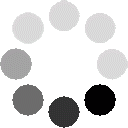How to Read World Literature
×
Success!
×
Error!
×
Information !
Rights Contact Login For More Details
- Wiley
More About This Title How to Read World Literature
- English
English
David Damrosch is Professor of English and Comparative Literature at Columbia University. Professor Damrosch's most recent publication is What Is World Literature? (2003), but he is perhaps best known as the general editor of The Longman Anthology of British Literature and of The Longman Anthology of World Literature (2004). From 2001 to 2003 he was President of the American Comparative Literature Association.
- English
English
Acknowledgments viii
Introduction 1
1 What Is "Literature"? 6
2 Reading across Time 24
3 Reading across Cultures 46
4 Reading in Translation 65
5 Going Abroad 86
6 Going Global 105
Epilogue: Going Farther 125
Bibliography 130
Index 136

